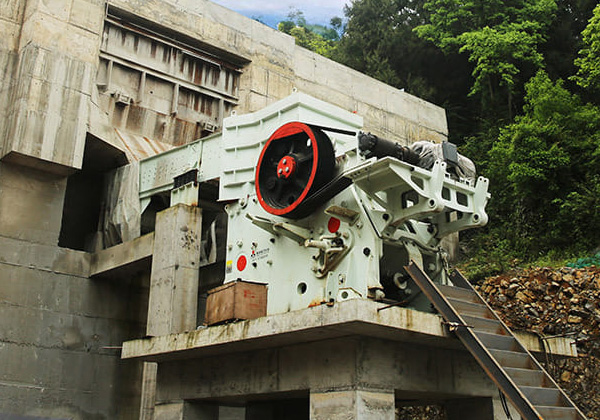A primary rock crushing jaw crusher is a crucial piece of equipment in a quarry or mining operation. It’s used to break large rocks into smaller, more manageable pieces that can then be processed further to extract valuable minerals or materials. Let’s delve into the workings and significance of this essential equipment.
Introduction to Jaw Crushers:
Jaw crushers are one of the primary types of crushers used in mining operations and ore processing plants. They are robust machines designed to handle large rocks and ores. The primary rock crushing jaw crusher consists of a fixed jaw plate and a movable jaw plate. The movable jaw plate pivots at the top and is actuated by a pitman mechanism.

Working Principle:
The working principle of a jaw crusher is straightforward. As the movable jaw plate moves towards the fixed jaw plate, the material fed into the chamber gets crushed. This crushing action is achieved by the movement of the two jaws, which create a squeezing force on the material. The crushed material then exits the chamber through the bottom discharge opening.
Components of a Jaw Crusher:
- Fixed Jaw Plate: This is the stationary part of the jaw crusher. It acts as a support for the movable jaw plate and houses the crushing chamber.
- Movable Jaw Plate: The movable jaw plate is attached to the pitman arm and moves back and forth against the fixed jaw plate, crushing the material fed into the chamber.
- Pitman Arm: The pitman arm connects the movable jaw to the eccentric shaft. It provides the necessary reciprocating motion to the movable jaw plate.
- Eccentric Shaft: The eccentric shaft is driven by the motor and rotates the pitman arm, causing the movable jaw to move in a circular motion.
- Toggle Plate: The toggle plate is a safety mechanism that prevents overload and protects the crusher from damage. It also serves as a link between the movable jaw and the toggle bearings.
- Toggle Bearings: These bearings support the toggle plate and allow it to pivot when the movable jaw moves.
Significance of Primary Rock Crushing Jaw Crusher:
- Size Reduction: The primary function of a jaw crusher is to reduce the size of large rocks into smaller particles. This is essential in mining and quarrying operations where oversized rocks need to be broken down to a manageable size for further processing.
- Uniform Product Size: Jaw crushers produce a uniform product size, which is desirable for many applications. This consistency ensures that the processed material meets the specifications required by downstream equipment or end-users.
- Versatility: Jaw crushers can handle a wide range of materials, including hard and abrasive rocks. They are suitable for various applications such as primary crushing, secondary crushing, and even tertiary crushing in some cases.
- High Production Capacity: Jaw crushers are capable of processing large volumes of material quickly and efficiently. This high production capacity makes them ideal for busy mining and quarrying operations where throughput is crucial.
- Reliability: Jaw crushers are robust machines designed to withstand the harsh conditions of mining and quarrying environments. With proper maintenance, they can provide years of reliable service, minimizing downtime and maximizing productivity.
- Cost-Effectiveness: Investing in a primary rock crushing jaw crusher can result in significant cost savings over time. By reducing the need for secondary crushing stages and minimizing the transportation of oversized material, jaw crushers help lower operating costs and improve overall profitability.
In conclusion, a primary rock crushing jaw crusher is a vital piece of equipment in the mining, construction, and recycling industries. Its ability to break down large rocks into smaller particles efficiently and reliably makes it indispensable for various applications. With their robust construction, high production capacity, and versatility, jaw crushers play a crucial role in modern ore processing plants and quarrying operations.
